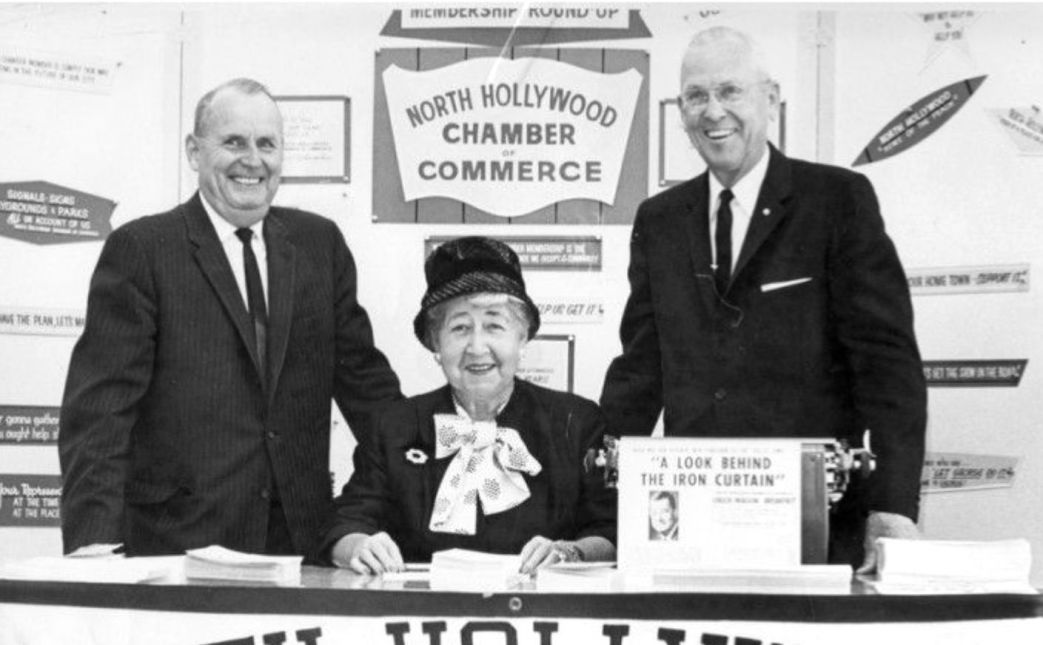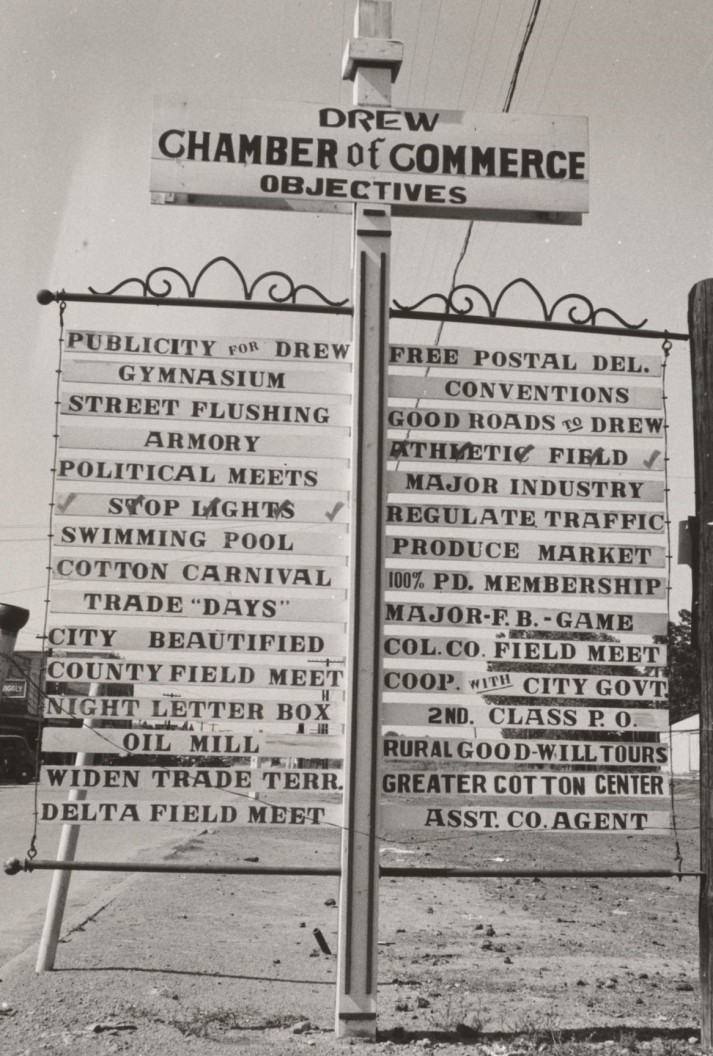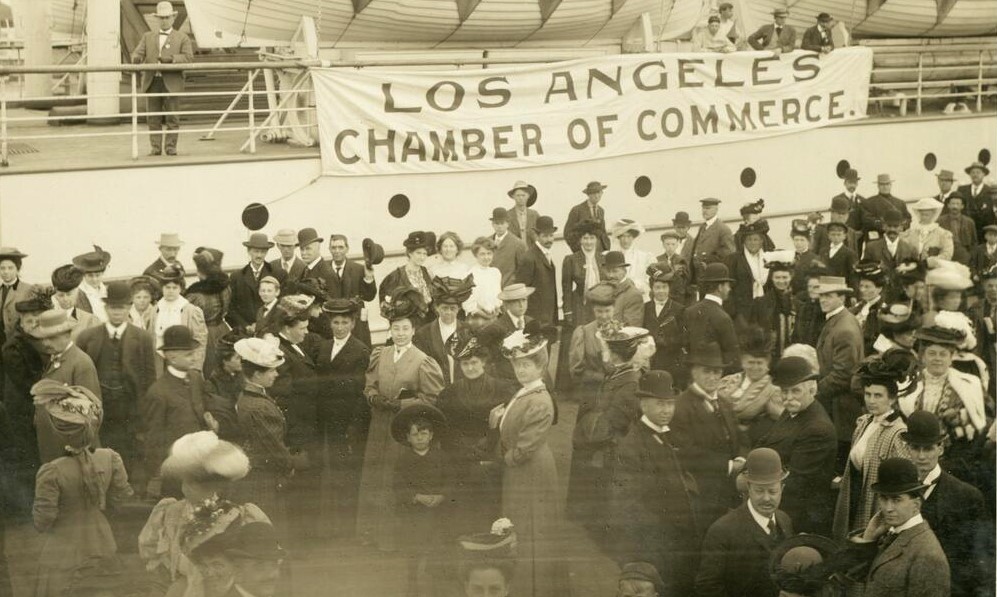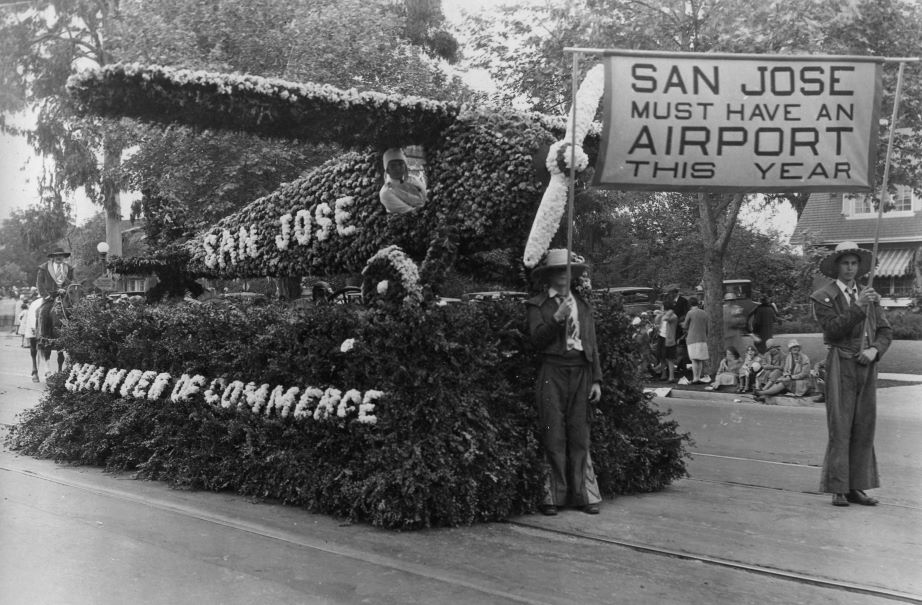Still exercising their petty dictatorships in towns and cities across the country, Jay Lovestone (writing under indictment and a pseudonym) provides some valuable history on the Chambers of Commerce that every community suffers under.
‘The American Chambers of Commerce: A Study in Capitalist Dictatorship’ by Roger B. Nelson (Jay Lovestone) from The Communist (Section of the Communist International). Vol. 1 No. 4. October, 1921.
THE American workingman is becoming more and more aware of the fact that the state is an instrument of oppression in the hands of the capitalist class. He is learning this lesson not so much from Communist propaganda as from his everyday struggles.
Through every strike, every industrial dispute, every political contest and every social problem this thread of capitalist domination runs. America is notorious for political graft, for legislative lobbies and for outright corporation ownership of government officials.
The writer proposes to deal with the role of Chambers of Commerce in American life-political, industrial and social. A survey of the history of American Chambers of Commerce leads one to find very close relations between trade associations and governmental bodies. From a purely, or at least dominantly, commercial body the American Chamber of Commerce has developed into a powerful political institution. Recent years have seen the Chambers of Commerce win a mighty hold on education, social organization, the press, government, foreign policy and the industrial life of the country. In short, the Chambers of Commerce are today political organizations-organizations of the capitalist class against the workers.
Early History
America’s oldest commercial organization is the New York Chamber of Commerce, founded in 1768. It was born out of the opposition to the Stamp Act and was instrumental in organizing street riots and demonstrations against British taxation. The first Boston Board of Trade particularly reflected the unrest of the revolution and England sent soldiers and ships to awe the merchants into submission.
Because of the slight progress made by American commerce up to the middle of the nineteenth century, the increase in the number of commercial bodies was, till then, very small. In 1858 there were only ten Chambers of Commerce and twenty Boards of Trade in the United States. The laying of the cable in 1866 and the development of the railway and telegraph systems revolutionized conditions of trade. Numerous commercial associations came into being.
New Tendencies
For over a century America’s commercial organizations were largely given over to the consideration of business problems of local or, at most, of national interest. With the development of imperialism and the intensification of the class struggle there arose the modern Chambers of Commerce. These are organizations of the craftiest and ablest is business men interested not only in the upbuilding of commerce but in politics, education, and all social movements. Mr. Wheeler, formerly president of the United States Chamber of Commerce, has pronounced these organizations “the most beneficent force that community life in America has ever known.” To Prof. Cherington of the Harvard Graduate School of Business Administration, the Chambers of Commerce are the “doing bodies” of our cities.
In 1912 the United States Chamber of Commerce was formed. The Secretaries of Labor and Commerce and the President christened it. Today it has over twelve hundred affiliations and a membership of 670,000. It is the largest business organization in the world. Its influence reaches every walk of life. More than three thousand cities and towns in the United States have Chambers of Commerce or organizations resembling them. All in all there are now in the United States over 4,500 commercial organizations. They are listed as Chambers of Commerce, Boards of Trade and Commercial Clubs, Leagues and Associations. In 1905 there was founded the International Congress of Chambers of Commerce representing the business men of the entire world. Recently this body held a convention at which were considered the problems confronting the capitalist class in its struggle to maintain power.
Influence on Government
The influence of commercial organizations on government is manifold. It is not for us to consider at this point the extensive network of legislative lobbies. The notorious “Million Dollar Legislature of California”; the lobbies of the huge trusts; the grants of stupendous natural resources; the corporation-subsidizing of campaign funds; and selling of public utility privileges by city legislators speak volumes in substantiation of the truth that our “democracy” is a government of, by and for the capitalist class.
From the by-laws of the United States Chamber of Commerce we learn that its purpose is to establish closer relations between the commercial interests and the Federal officials. It aims “to secure cooperative action in advancing the common purposes of its members, uniformity and equity in business usages and laws, and proper consideration and con- centration of opinion upon questions affecting the financial, commercial, civic and industrial interests of the country at large.” For the last decade the Department of Commerce has been working hand in glove with the United States Chamber.
Throughout the country the Chambers of Commerce have delegated to themselves the power to act as the guardians of the cities’ “stability and prosperity.” In cities and towns having the Commission form of government these bodies play an especially important role. They plan the social and financial legislation. They are the power behind the throne. The flood disasters of 1913 deprived Hamilton, Ohio of its municipal government. In this emergency the Chamber of Commerce set up a provisional government. A commercial body took over the reins of government.
As the working class grows more mature politically, as the class struggle becomes more sharp, the Chambers of Commerce take on wider political functions. This tendency has been well estimated by the head of Williams College. He said: “The center of political gravity is gradually settling, and if it passes from legislative bodies to the electorate, there must be found a workable way of securing deliberation among the voters. If it should come about that the only place for free and effective deliberation is among the voters prior to election day, then, plainly, bodies like the Cleveland Chamber of Commerce will become normal centers for the consideration of public questions and their influence will be increasingly important.” (Emphasis ours). The Cleveland Chamber of Commerce has been particularly successful in gaining political power, in molding the opinions of the masses, and in guiding their demands into safe channels.
Powerful Factor in Social Life
In social life the Chambers of Commerce have steadily grown in influence. Through an effective control of advertising the newspapers are at their mercy. Should a small town or even city newspaper antagonize the local Chamber it is bound to feel the heavy hand of the almighty dollar. The leading business houses are members of the Chamber of Commerce and they discontinue advertising. This puts the quietus on the recalcitrant press and “public opinion” remains safe.
The churches and public and higher schools are to a great extent dominated by these commercial associations. The god of every church is at the mercy of Mammon. Unless policies acceptable to the supporters are adopted, the pastor himself is compelled to look to heaven for relief. Hence, the national “law and order” Sundays; the Americanization campaign waged by the churches. Thus do the Chambers of Commerce own even the souls of the workers!
Many of our leading colleges and universities work in close cooperation with the Chambers of Commerce. The control of America’s highest educational centers by corporations needs no emphasis. The influence of Morgan in Columbia, Rockefeller in the University of Chicago, and the Anthracite Kings in Pennsylvania University is a fait accompli. Many institutions have their curricula planned by the Chambers of Commerce. Some conduct special courses under the latter’s auspices. The Harvard Graduate School of Business Administration, the Wharton School of Finance in the University of Pennsylvania, Cornell, City College, New York University, Oberlin and Williams College work in very close cooperation with their respective Chambers of Commerce. These specialize in turning out trained spokes- men, “expert secretaries” for the commercial interests. Naylor in his “Trade Associations” (page 143) sums up the situation from a business point of view by saying: “In several of the universities of this country courses are given under the patronage of trade associations. The paper industry encourages the technical study of paper making at the University of Maine and elsewhere through its Vocational Edu cation Committee. Other associations have arrangements with various technical schools for the training of scientific men for their particular industries.”
In Cleveland the Chamber of Commerce controls all the philanthropic activities. No one is permitted to solicit funds without permission from the Central Federation of Charity which was created and is completely controlled by the local Chamber of Commerce. All plans for proposed public works are first submitted to the Committee on Municipal Art and Architecture, a subsidiary body of the local Chamber. The city Charter of 1912 was a product of the Chamber’s Committee on Legislation. It must be remembered that the Cleveland organization is typical of the hundreds that wield as much, if not more, power. Boston, Denver, and Kansas City also boast of highly developed Chambers of Commerce.
Industrial Field
In strikes and labor disputes the Chambers are especially active. The vicious open shop drive is largely financed by the U.S. Chamber of Commerce, National Association of Manufacturers, Manufacturers’ Association of Illinois, National Metal Trades, National Founders’ and National Erectors’ Associations.
San Francisco’s Chamber of Commerce was behind the anti-labor campaign which terminated in the imprisonment of Tom Mooney and Billings. The Chamber of Commerce was the heart of the scab movement in the Boston police strike. In the Lawrence and Paterson strikes the Chambers of Commerce directed the capitalist forces. Ole Hanson was only the mouthpiece of the Chamber of Commerce in the Seattle General Strike.
Palmer’s furious drive was, to a great extent, inspired by the U.S. Chamber of Commerce. The latter’s agents worked side by side with the Department of Justice thugs. Tday the Chamber maintains an elaborate anti-Red bureau. In the Report (p. 35) of the Ninth Annual Meeting of the Directors of this body we find the following: “The organization of a staff to carry on the work of the Committee on American ideals was completed soon after the last annual meeting. The first efforts of the Committee were directed to securing the co-operation of the organization members of the Chamber, who were asked to appoint committees of their own to work with the Central Committee. There has been a cordial response to this request. The Committee maintains headquarters in New York City and has collected and disseminated information to the membership of the Chamber as to radical activities, methods of Americanization adopted and found helpful by commercial organizations and individual business firms.” (Emphasis ours.)
The role of the Chambers of Commerce in the class struggle is stated very plainly by one, Wilson, in his “Community Leadership” (p. 62). He says: “If the public gets muddled on the issue and mixes evolution with revolution together, there is no prophet so rash as to predict the outcome. To keep the matter straight, there must be an organized center of community leadership in hundreds of cities where the clearest headed and most patriotic citizens may exert their influence to the utmost.” Wilson frankly says that the modern Chamber of Commerce is the mechanism through which the forward-looking capitalists can unify and direct the opposition to the forces struggling against the present order.
Pursuing this path the Chamber of Commerce is underwriting the expense of maintenance incurred by many counter-revolutionary organizations. The Indianapolis Chamber of Commerce, for instance, pays the rent for the American Legion’s national headquarters. Numerous Legion posts are in the hands of the Chambers and their agents. Scab-herders always look to the local commercial bodies in time of distress, as was shown by the relief accorded to the Baldwin- Felts thugs in the last West Virginia episode.
Summary
1. The American Chambers of Commerce and the numerous trade associations are an integral part of the capitalist dictatorship in this country. They are a powerful link in the chain that binds the workers to wage slavery. The stock-exchange and the state executive power are closely interlinked.
2. They are the “doing bodies” and the brains of the capitalist democracy. No economic or political legislation is anywhere passed without their being “consulted.”
3. Through their hold on advertising they have great control over the press. Through their contributions and aggressive demands they dominate many colleges and universities and the major party campaign funds. The Chambers also control the purse strings of the church.
4. The Chambers serve as the recruiting ground for all reactionary movements. They direct the anti-labor forces, support the counter-revolutionary organizations and mould opinion against the working class.
5. In every strike, in every labor dispute, the Chambers of Commerce line up for war and drive all the governmental forces into action against the workers.
The Chambers of Commerce are rallying centers of counter-evolution. They constitute a strong, extra-governmental, state power. They are the vital link between the stock exchange and the executive forces of the capitalist state.
What Can We Do?
The Party must wage an aggressive campaign against the Chambers of Commerce. We must unmask their pernicious anti-labor activities in the legislature, school, and press. In every strike we must point out to the workers the real character of these associations a union of capitalists along class lines, regardless of trade or industry. From this we must. have the workers draw the lesson of the necessity for broadening their organizations, losing their craft outlook, and meeting the solidarity of capitalist oppression with the solidarity of working class liberation.
Emulating the Bolsheviks who changed the name of their party in 1918 to the Communist Party, there were up to a dozen papers in the US named ‘The Communist’ in the splintered landscape of the US Left as it responded to World War One and the Russian Revolution. This ‘The Communist’ began in July 1921 after the “Unity Convention” in Woodstock, New York which created the Communist Party of America, Section of the Communist International uniting the old CPA with the CLP-CPA party. With Ruthenberg mostly as editor the paper acted as the Party’s underground voice, reporting official party business and discussion. The Toiler served as the mass English-language paper. This ‘The Communist’ was laid to rest in December, 1922 with the creation of the above-ground Workers Party. An invaluable resource for students of the formation of the Communist Party in the US.
PDF of full issue: https://www.marxists.org/history/usa/pubs/thecommunist/thecommunist6/v1n04-oct-1921-com-CPA.pdf



